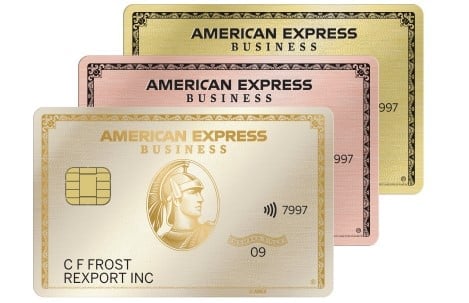Purchase Order Financing: What It Is and How to Get It
PO financing can be a good option for businesses with a cash flow shortage that still want to be able to complete an influx of orders.

Many, or all, of the products featured on this page are from our advertising partners who compensate us when you take certain actions on our website or click to take an action on their website. However, this does not influence our evaluations. Our opinions are our own. Here is a list of our partners and here's how we make money.
Table of Contents
Concerned about tariffs?
Many small-business owners are under increased economic stress and uncertainty following the latest tariff announcements. NerdWallet is here to help you find answers for whatever you're looking for. Here are some resources to help you get started:
Need emergency funding? Consider a business line of credit.
Looking for fast access to working capital? Discover the best working capital loans.
Want tips on how to mitigate the impact of tariffs? Read our guide.
Purchase order financing, also known as PO financing, gives you the ability to pay your suppliers for the goods you need to fulfill outstanding customer orders. This type of financing can make sense for small businesses that receive more sales and orders than they have inventory or cash to complete — and don’t want to take out a traditional small-business loan.
Here’s what you need to know about purchase order financing, how it works and where to get it for your business.
How much do you need?
We’ll start with a brief questionnaire to better understand the unique needs of your business.
Once we uncover your personalized matches, our team will consult you on the process moving forward.
What is purchase order financing?
Purchase order financing is a cash advance that small-business owners can receive on their purchase orders. With PO financing, a lender will pay your third-party supplier up to 100% of the costs required to produce and deliver the agreed-upon goods to your customer.
Once your customer receives the goods, you invoice them for the fulfilled order, and they pay the purchase order financing company directly. Then, the PO financing company deducts its fees and pays you the rest.
Purchase order financing takes place before you’ve delivered goods to a customer and before you’ve sent them an invoice for an order. If you’re looking for funding that lets you borrow capital from your unpaid invoices, you’ll want to consider invoice financing.
How does purchase order financing work?
With traditional small-business loans, only two parties are involved: you and the lender issuing the funding. When you enter into a purchase order financing agreement, however, the following parties will typically be involved throughout the process:
Your company/the borrower: You, who is seeking financing to fulfill a purchase order for your business.
Purchase order financing company: The company offering the financing. This company verifies your purchase order and provides funds to the supplier.
Supplier: The third party that supplies or manufactures the goods that you resell or distribute. The supplier receives payment for its goods from the purchase order financing company directly.
Customer: Your customer, the party trying to buy the goods. In a purchase order financing arrangement, after your customer has received their goods, they typically pay the financing company directly.
Here’s a breakdown of how purchase order financing works:
You receive a purchase order. Your business receives a large order from a customer, but you don’t think you have the inventory or cash on hand to fulfill it.
You determine the costs. You reach out to your supplier to determine how much it will cost to complete the order. Based on the cost assessment your supplier provides, you can confirm whether you’ll need to apply for financing to fulfill the order.
You apply for purchase order financing. After you’ve decided that you need PO funding, you’ll want to find the right purchase order financing company, submit an application and, hopefully, receive approval. You should submit the purchase order and the supplier’s cost estimate as part of your application. The financing company may approve you for up to 100% of the supplier’s costs, depending on your business’s qualifications, the supplier’s track record and reputation, and the customer’s creditworthiness. It’s important to note that if the financing company approves you for only a percentage of funding — say, 90% of the supplier’s costs — you’ll be responsible for covering the remaining 10% on your own.
The purchase order financing company pays the supplier. Once you’ve been approved, the purchase order financing company will pay your supplier to manufacture and deliver the goods that are needed to fulfill the customer’s purchase order. Many financing companies will pay suppliers using a letter of credit — an official bank guarantee that payment will be made once certain conditions are met — in this case, once the goods have been shipped and proof of shipment has been provided.
The supplier delivers the goods to the customer. The supplier ships the goods directly to the customer. Once the customer receives the goods, the order is complete.
You invoice the customer. After the customer receives the goods, you send them an invoice for the order. You also send the invoice to the purchase order financing company.
The customer pays the purchase order financing company. The customer pays the financing company directly for the full price of the invoice.
The financing company deducts its fees and transfers your funds. After receiving payment from the customer, the purchase order financing company deducts its fees and pays you the remaining balance from the proceeds.
How much does purchase order financing cost?
Purchase order financing fees typically range from 1% to 6% per month and are usually priced on a per-30-day period. These fees are charged on the total of the supplier’s costs, but generally increase the longer it takes your customer to pay their invoice.
Say, for example, you have a purchase order financing agreement in which the supplier is paid $100,000. The financing company charges a fee of 2% per 30 days. If it takes your customer 30 days to pay their invoice, your total fees are 2% of $100,000, or $2,000. If it takes your customer 60 days to pay their invoice, on the other hand, your total fees equal 4% of $100,000, or $4,000.
These fees may seem low; however, since they’re not traditional business loan interest rates, it’s important to calculate them into annual percentage rates to understand the true cost of the financing. APRs on purchase order financing often fall upward of 20%.
Some purchase order financing companies may also use a rate structure in which you receive a set fee for the first 30 days and then a lower rate for a specified number of days until your customer pays.
For instance, a company may charge 3% per 30 days and then 1% per 10 days thereafter, or 3% per 30 days and then 0.1% per day thereafter.
The purchase order financing fees that you receive will ultimately depend on factors such as your business’s qualifications, your customer’s creditworthiness and the reputation of your supplier.
Purchase order financing pros and cons
Pros
Allows you to take on customer orders you couldn’t otherwise fulfill. Purchase order financing can be a good option for seasonal businesses, or those that are growing quickly and need extra capital to fulfill large orders from customers. Similarly, this type of financing can be worthwhile for businesses that are experiencing a cash flow shortage and could benefit from an order that would generate significant revenue.
Can be easier to qualify for than other types of business financing. Many purchase order financing companies focus on the creditworthiness of your customers and the reputation of your suppliers first and foremost when evaluating your business’s application for funding. Although these companies will still consider traditional business loan requirements like your business’s financials and credit history, it may be easier for startups and businesses with credit challenges to qualify compared with other types of business funding.
Doesn’t require budgeting monthly or weekly loan payments. Although you’re borrowing money, purchase order financing isn’t technically a loan, so you don’t have to worry about paying back funds in monthly or weekly installments — like you would with a business term loan.
Cons
Can be expensive. Purchase order financing fees may seem competitive at first glance — typically ranging from 1% to 6% of the total supplier’s costs per month — but when you calculate these fees into an APR, rates can turn out to be much higher. Anecdotally, they can range from 20% to upward of 50%.
Reliance on customers. The amount you pay in fees is based on how long it takes your customer to pay their invoice, meaning it’s difficult to estimate the total cost of purchase order financing upfront. Plus, to access PO financing, you must rely on your customer’s creditworthiness (on top of other factors) in order to qualify.
Loss of control. With purchase order financing, the company you work with manages a significant amount of the process — including paying your supplier and collecting payment from your customer. Your supplier also ships goods directly to your customer, meaning you don’t have your hands in that part of the process, either. Although this may save your business time, it might also mean processes are not handled in the way you prefer, which could potentially risk relationships with your suppliers or customers.
Top purchase order financing companies
Purchase order financing is usually offered by online financing companies, many of which specialize in this type of business capital. Some banks may offer PO financing for existing customers or larger-scale clients, but they don’t typically advertise or offer these services for small businesses.
If you’re looking for a place to start your search, here are a few of the best purchase order financing companies to consider:
SMB Compass
SMB Compass offers PO financing in amounts that typically range from $25,000 to $10 million, with rates from 1.5% to 3.5% per 30-day period and funding in as little as 24 hours. The company also offers other types of business loans, including inventory financing, invoice financing and equipment financing.
PurchaseOrderFinancing.com
As the name implies, this company focuses exclusively on PO financing, offering up to 100% funding of your supplier costs for amounts of $500,000 to $25 million. PurchaseOrderFinancing.com doesn’t specify its fees online — the company indicates that it may get between 3% and 6% of the profit you make on the deal being financed. After you’ve started the application process, you can expect a response from PurchaseOrderFinancing.com within approximately 72 hours, and qualified businesses can fund between seven to 14 days.
King Trade Capital
According to its website, King Trade Capital is the largest purchase order financing company in the U.S., providing funding to small- and medium-size businesses across the country. However, King Trade doesn’t provide many details about its services upfront, other than that it can provide funding decisions within days. Interested businesses will need to submit a funding request for more information through the website.
Liquid Capital
Liquid Capital specializes in asset-based financing solutions, such as purchase order financing, invoice factoring and inventory financing. Liquid Capital’s purchase order financing covers up to 100% of supplier costs, offering up to $10 million in funding. Qualified businesses can receive financing in as little as 24 hours. Although the company says there are no hidden terms with its funding, it does not provide information about fees or rates on its website.
How to choose a purchase order financing company
As you compare different options, you can ask the following questions to find the right purchase order financing company for your business:
Experience
How often does the company handle purchase order financing agreements?
Does the company have experience working with businesses in your industry?
How long has the company been in business?
Financing process
Do you need to meet a minimum funding amount to work with the company?
How does the company pay suppliers? Does it use letters of credit?
How does the company receive payment from your customers?
Does the company contact your customers directly? If so, how?
What happens if your customers fail to pay?
What kind of vetting process will it perform on your suppliers and customers?
How quickly will you receive your funds?
Fees and other requirements
What are the typical fees and how do they break down?
What percentage of supplier costs does the company offer as an initial advance?
Does the company require a personal guarantee?
What type of documentation (e.g., tax returns, financial statements) is required for the application?
Alternatives to purchase order financing
If PO financing isn’t right for you, there are other options that may be a better fit, whether you’re having trouble qualifying for financing, want to maximize rewards or want a revolving solution for cash flow gaps.
Invoice financing: Invoice financing allows you to use unpaid customer invoices as collateral on a loan for your business. Unlike PO financing, invoice financing funds business expenses after they occur, instead of before you complete a customer’s order.
Business lines of credit: Business lines of credit are revolving loans that can be useful for shortages in business cash flow. If approved, you can borrow up to a certain limit, only pay interest on the amount you’ve borrowed and continue borrowing as you pay the amount down.
Business credit cards: Much like business lines of credit and personal credit cards, business credit cards allow you to spend up to a certain approved amount on your card, and keep spending as you pay the amount borrowed down. Many credit cards also offer other benefits, like 0% introductory APR periods or rewards points for every dollar you spend. However, be wary of carrying over balances month to month, as interest can add up quickly.
Find and compare small-business loans
If purchase order financing isn't right for you, check out NerdWallet’s list of the best small-business loans for business owners.
Our recommendations are based on the market scope and track record of lenders, the needs of business owners and an analysis of rates and other factors so you can make the right financing decision.






